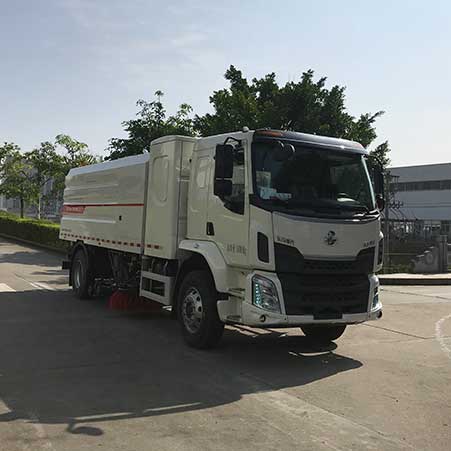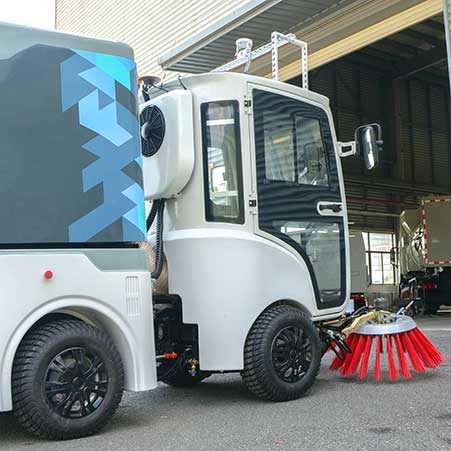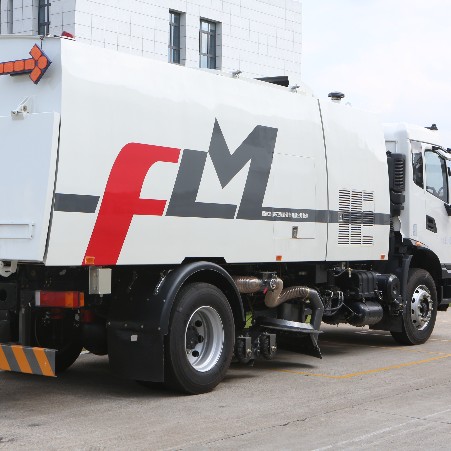Street washing trucks, also known as street sweepers or road cleaners, are specialized vehicles designed to clean and maintain the cleanliness of urban streets. These trucks are equipped with high-pressure water jets, scrubbers, and vacuums to remove debris, dirt, and pollutants from road surfaces. They are essential in the ongoing battle against urban grime, ensuring that streets are not only clean but also safe for pedestrians and motorists.
The Role of Street Washing Trucks
Street washing trucks play a multifaceted role in urban cleanliness. Their primary function is to remove dirt, litter, and other debris from roadways, but their benefits extend beyond simple cleanliness. By keeping streets free from trash and pollutants, these trucks help prevent the clogging of storm drains, reducing the risk of flooding. They also minimize the presence of harmful substances that can contribute to air and water pollution. Additionally, street-washing trucks enhance the overall appearance of cities, making them more inviting and livable.

Anatomy of a Street Washing Truck
- Water Tank: Holds the water used for cleaning. These tanks can hold several hundred gallons of water, allowing the truck to clean large areas without frequent refills.
- High-Pressure Water Jets: Located at the front and sides of the truck, these jets spray water at high pressure to dislodge dirt and debris from the road surface.
- Scrub Brushes: Rotating brushes scrub the road surface, loosening grime and stains that the water jets alone cannot remove.
- Vacuum System: This system sucks up the loosened dirt and debris, storing it in a hopper for later disposal.
- Control Panel: Allows the operator to control the various functions of the truck, adjusting water pressure, brush speed, and other parameters as needed.
How Street Washing Trucks Operate
The operation of a street washing truck involves several steps to ensure thorough cleaning:
- Preparation: The operator fills the water tank and checks all systems to ensure they are functioning correctly.
- Sweeping: The truck moves along the street, with the water jets spraying high-pressure water to loosen dirt and debris. The scrub brushes then agitate the surface, scrubbing away stubborn grime.
- Vacuuming: The vacuum system sucks up the loosened dirt and water mixture, storing it in the hopper.
- Disposal: Once the hopper is full, the truck transports the collected debris to a disposal site, where it is emptied and prepared for the next cleaning cycle.
Future of Urban Cleanliness
The future of urban cleanliness looks promising, with advancements in technology enhancing the efficiency and effectiveness of street-washing trucks. Innovations such as automated and electric street sweepers are on the rise, offering quieter, more eco-friendly alternatives to traditional models. Additionally, smart city initiatives are integrating street cleaning data with other urban management systems, allowing for more coordinated and responsive cleaning efforts.
FAQ
How often should streets be washed in a city?
The frequency of street washing depends on several factors, including the city’s size, traffic volume, and weather conditions. In general, busy urban areas may require daily cleaning, while quieter residential streets might be washed weekly or bi-weekly.
Are street washing trucks environmentally friendly?
Modern street washing trucks are designed to be environmentally friendly, with many models featuring water recycling systems and low-emission engines. Electric and hybrid models are also becoming more common, reducing the environmental impact of street cleaning operations.
Can street washing trucks operate in all weather conditions?
Street washing trucks can operate in most weather conditions, although extreme weather such as heavy snow or severe storms may temporarily halt operations. In winter, some trucks are equipped with additional features like snow plows and salt spreaders to assist with snow and ice removal.







